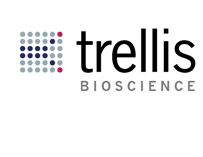预约演示
更新于:2025-05-07
RSV-G
更新于:2025-05-07
基本信息
别名- |
简介- |
关联
3
项与 RSV-G 相关的药物靶点 |
作用机制 RSV-G抑制剂 |
在研适应症 |
非在研适应症- |
最高研发阶段临床前 |
首次获批国家/地区- |
首次获批日期1800-01-20 |
靶点 |
作用机制 RSV-G抑制剂 |
在研适应症 |
非在研适应症- |
最高研发阶段临床前 |
首次获批国家/地区- |
首次获批日期1800-01-20 |
作用机制 RSV M蛋白抑制剂 [+1] |
在研适应症 |
非在研适应症- |
最高研发阶段临床前 |
首次获批国家/地区- |
首次获批日期1800-01-20 |
100 项与 RSV-G 相关的临床结果
登录后查看更多信息
100 项与 RSV-G 相关的转化医学
登录后查看更多信息
0 项与 RSV-G 相关的专利(医药)
登录后查看更多信息
39
项与 RSV-G 相关的文献(医药)2025-04-01·Biosensors and Bioelectronics
Structure switching aptamer enhance sensitivity and specificity of photonic crystal-based sensors for RSV-G protein detection
Article
作者: Meng, Zihui ; Qiu, Lili ; Irfan, Muhammad ; Wang, Yifei ; Xu, Zhibin ; Shehzadi, Kiran ; Kalsoom, Iqra
2025-03-14·Organic Letters
Spirochrains A–D, Four Caged [5,6,5] Spirocyclic Amides from an Antarctic Fungus Aspergillus ochraceopetaliformis SCSIO 05702 with Anti-RSV Activities
Article
作者: Tian, Xinpeng ; Yan, Yan ; Cong, Mengjing ; Liu, Yonghong ; Chen, Xiangliu ; Yang, Jie ; Li, Yinyan ; Pang, Xiaoyan ; Li, Yanqin ; Wang, Junfeng
2024-12-17·Journal of Virology
Both chebulagic acid and punicalagin inhibit respiratory syncytial virus entry via multi-targeting glycoprotein and fusion protein
Article
作者: Zhang, Zhaowei ; Xiong, Yingcai ; Cao, Peng ; Tao, Keyu ; Ou, Weiying ; Ji, Jianjian ; Hou, Yayi ; Zhou, Yinghui ; Wang, Shouchuan ; Wang, Zhao ; Li, Tao
2
项与 RSV-G 相关的新闻(医药)2023-07-25
药物研发进展
1.康希诺生物重组带状疱疹疫苗CS-2032在加拿大获批临床
7月23日,康希诺生物发布公告称,其与Vaccitech公司合作开发的重组带状疱疹疫苗(腺病毒载体)(CS-2032带状疱疹疫苗)已获得加拿大卫生部的临床试验批准。该疫苗目标人群为50岁以上成年人,适用于预防水痘-带状疱疹病毒引起的皮肤带状疱疹和神经痛。带状疱疹是由潜伏在体内的水痘-带状疱疹病毒(VZV)再激活而引起的一种急性感染性皮肤疾病。儿童时期初次感染VZV引起水痘,感染后病毒进入皮肤的感觉神经末梢,沿着脊髓后根或三叉神经节神经纤维向中心移动,以一种持久潜伏的形式长期存在于脊神经或颅神经感觉神经节中。当人体免疫力低下或受到非特异性刺激后,病毒再次活动,生长繁殖,导致受侵犯的神经节发炎或坏死,产生神经痛。同时,再活动的病毒从一个或数个相邻的神经节沿着相应的感觉神经纤维传播到皮肤,造成单侧分布的红斑基础上的簇集性水泡。在爆发前阶段,患者表现为低热、不适、将发疹部位疼痛、感觉异常;在急性发作期,患者表现为皮疹和疼痛,单侧皮肤表面水疱、红斑、硬结;在慢性期,患者则表现为持续疹后神经痛。根据康希诺生物公告,CS-2032带状疱疹疫苗采用了黑猩猩腺病毒载体技术路线,腺病毒载体疫苗能够同时激发细胞免疫与体液免疫。同时,临床试验产品采用先进的工艺技术及符合国际标准的品质管制和控制体系生产,疫苗全生产过程中不使用任何动物源成分,从而提高了最终产品的安全性。临床前研究数据显示,CS-2032带状疱疹疫苗能够同时激发体液免疫与细胞免疫,体液免疫与葛兰素史克(GSK)的重组带状疱疹疫苗Shingrix没有显著性差异,而系统性细胞免疫水平则显著高于后者,预计CS-2032会具有良好的保护效力。
2.礼来IL-23抑制剂mirikizumab拟纳入突破性治疗品种,治疗克罗恩病
7月24日,中国国家药监局药品审评中心(CDE)官网最新公示,礼来(Eli Lilly and Company)申请的mirikizumab注射液拟纳入突破性治疗品种,拟开发用于治疗中重度活动性克罗恩病(CD)成人患者。公开资料显示,mirikizumab(LY3074828)是一款IL-23抑制剂,目前正在海外开展多项3期临床试验。克罗恩病是一种炎症性肠病(IBD),会导致消化道组织肿胀(发炎),从而引起腹痛、严重腹泻、疲劳、体重减轻和营养不良。在不同人中,克罗恩病导致的炎症会在消化道的不同区域发生,最常见于小肠部位。此外,这种炎症通常会扩散到肠道的深层,严重时可能致命。礼来开发的mirikizumab是一种人源化IgG4单克隆抗体,可与IL-23的p19亚基结合,阻断IL-23介导的炎症反应。作为一种炎性细胞因子,IL-23参与了多个炎症相关的生理过程,被认为与许多免疫介导的慢性疾病有关,也因此成为了许多自身免疫性疾病的治疗靶点。此前,mirikizumab已在治疗中重度克罗恩病的2期临床试验中获得积极结果。这是一项名为SERENITY的随机、双盲、含安慰剂对照试验,主要终点是12周之后内镜缓解率,定义为克罗恩病简化内镜评分(SES-CD)与基线相比降低50%。次要终点包括患者报告结局(PRO)检测的临床缓解,以及安全性。试验达到了主要终点和关键次要终点,与安慰剂相比,mirikizumab在治疗12周后显著降低临床和内镜检测到的疾病活动。在内镜缓解率方面,接受200mg、600mg和1000mg剂量mirikizumab的患者组,缓解率分别为25.8%、37.5%和43.8%,安慰剂组这一数值为10.9%。在PRO临床缓解率方面,接受200mg、600mg和1000mg剂量mirikizumab的患者组,缓解率分别为12.9%、28.1%和21.9%,安慰剂组这一数值为6.3%。
3.正大天晴超5000万美元引进,口服PPAR激动剂拟纳入突破性治疗品种
7月24日,中国国家药监局药品审评中心(CDE)官网最新公示,正大天晴申请的1类新药lanifibranor片拟纳入突破性治疗品种,拟开发用于治疗伴有肝纤维化的非肝硬化非酒精性脂肪性肝炎(NASH)的成人患者。公开资料显示,lanifibranor(拉尼兰诺)是一种口服PPAR激动剂,正大天晴通过一项超5000万美元的合作,获得了该药在大中华区的开发、生产和商业化权利。NASH是非酒精性脂肪性肝病(NAFLD)的更晚期形式,也是导致肝脏相关死亡的主要原因。此外,NASH患者,特别是那些具有更多代谢风险因素的患者,心血管不良事件的风险增加,发病率和死亡率也相应提高。一旦NASH发展为显著的肝纤维化,患者产生不良肝损伤结果的风险急剧上升。Lanifibranor是一种口服过氧化物酶体增殖物激活受体(PPAR)激动剂,可同时激活PPARα、PPARδ和PPARγ,这些受体在调控脂质代谢、炎症反应和纤维化过程中发挥重要作用。该药物通过作用于这三种PPAR亚型来调节脂肪代谢,减轻肝脏炎症和纤维化。此前,美国FDA已授予lanifibranor用于治疗NASH的突破性疗法认定和快速通道资格。在针对NASH的2b期NATIVE试验中,lanifibranor已显示出良好的安全性和耐受性。Lanifibranor 1200mg/天、持续24周的治疗,显著降低了肥胖且经活检证实为NASH患者的SAF-A(脂肪变性、活动性、纤维化的活动度)评分。此外,研究也达到了多个次要终点,包括NASH缓解且纤维化不进展,纤维化分期改善至少1期且NASH无恶化,以及NASH缓解且纤维化分期至少改善1期。此外,lanifibranor治疗还显著改善了血清转氨酶水平,肝损伤、炎症和纤维化的生物标志物,糖化血红蛋白(HbA1c)、脂质水平和胰岛素水平。
4.倍特得诺药业申报肌肉松弛药巴氯芬口服溶液拟纳入优先审评
7月24日,中国国家药监局药品审评中心(CDE)官网公示,倍特得诺药业申报的巴氯芬口服溶液拟纳入优先审评,公开资料显示,巴氯芬是一种中枢肌肉松弛药,它通过作用于脊髓和脑部的GABA受体,降低神经元的兴奋性,减轻肌痉挛和僵硬,并且该药的药效持续时间较长,可以达到12小时。GABA(γ-氨基丁酸)是人脑中的一种主要的抑制性神经递质,能降低中枢神经系统的兴奋性。巴氯芬通过增加GABA的合成和释放,增强其在神经元上的抑制作用,从而降低肌肉张力,达到缓解随意肌痉挛的目的。该产品用于缓解由以下疾病引起的随意肌痉挛:多发性硬化、其他脊髓损伤,例如脊髓肿瘤、脊髓空洞症、运动神经元疾病、横贯性脊髓炎、脊髓创伤性部分切除;也适用于成人和儿童,用于缓解因脑血管意外、脑瘫、脑膜炎、颅脑外伤引起的随意肌痉挛。根据CDE公示信息,该产品为儿童用药新剂型,按“符合儿童生理特征的儿童用药品新品种、剂型和规格”纳入优先审评审批程序。巴氯芬由诺华研发和生产,最早于1973年在意大利上市,是第一个应用于临床的选择性GABAβ受体激动剂。1977年,巴氯芬获FDA批准在美国上市。1980年经PMDA批准在日本上市;1998年经NMPA批准进入中国市场;2005年在欧洲上市。巴氯芬临床选择的剂型有普通片剂、口服混悬剂、注射剂、颗粒剂。
5.Bavarian Nordic RSV疫苗产品III期VANIR研究未达终点,终止产品开发
7月22日,Bavarian Nordic宣布其呼吸道合胞病毒(RSV)疫苗产品MVA-BN RSV在III期VANIR研究中未能显著降低下呼吸道疾病(LRTD)的发生率,因此决定终止该产品的开发计划,并结束与优锐医药的合作关系。MVA-BN RSV是一款以MVA-BN为载体的RSV疫苗,同时编码RSV表面蛋白G蛋白及F蛋白和内部蛋白N蛋白及M2蛋白,旨在刺激广泛的免疫应答。2022年3月,优锐医药以2.25亿美元的总交易额获得该疫苗的中国、韩国、东南亚国家权益。VANIR研究是一项全球性、随机、双盲、安慰剂对照的III期临床试验,共纳入超过20000例60岁及以上的受试者。最终研究结果显示,MVA-BN RSV预防至少2种LRTD症状发生的效力为59%,显著优于安慰剂组。然而,该疫苗预防至少2种LRTD症状发生的效力仅有42.9%,与安慰剂组的数据无显著性差异。Bavarian Nordic总裁兼首席执行官Paul Chaplin说:“MVA-BN RSV在这项关键试验中没有成功达到终点,我们对此感到失望。虽然这一结果出乎意料,并将影响我们的短期增长预期,但我们的商业业务仍然是独特的,因为最近几款产品的销售额强劲增长,这为公司未来几年的盈利增长奠定了坚实的基础。”今年3月,强生的病毒载体RSV疫苗JNJ-64400141亦被终止开发。强生给出的解释是“对投资组合进行审查以确定产品开发优先级以及对RSV疫苗的前景评估后,决定终止RSV成人疫苗项目”,不过,也有外界推测其终止决定可能跟疫苗的预防效果或安全性相关。
6.吉利德终止CD47单抗magrolimab III期研究
7月21日,吉利德宣布,CD47单抗magrolimab联合阿扎胞苷治疗高风险骨髓增生异常综合征(MDS)的III期ENHANCE研究因计划分析结果无效而终止。该研究中的安全性数据与已知的magrolimab概况以及该患者群体中典型的不良事件相符。吉利德建议MDS患者停止使用magrolimab治疗。Magrolimab是一种潜在的first-in-class抗CD47免疫疗法,由吉利德49亿美元收购Forty Seven公司获得,主要作用机制是阻断CD47-信号调节蛋白(SIRPα)之间的抑制性相互作用,增强巨噬细胞和其他吞噬细胞识别和消灭外来细胞和恶性细胞的能力,从而达到阻断癌细胞发出的“别吃我”信号的目的。Magrolimab的临床开发计划涵盖10种潜在适应症,包括正在进行的两项关键试验:ENHANCE-2研究针对TP53突变的急性髓系白血病(AML),ENHANCE-3研究一线治疗不适合接受强化化疗的AML。吉利德开发magrolimab之路并不平坦。2022年1月,由于研究人员报告的可疑意外严重不良反应(SUSARs)在各研究组间存在明显的不平衡,FDA部分暂停了吉利德magrolimab+阿扎胞苷的联合研究。同年4月,吉利德迎来FDA解封。FDA在回顾了每个试验的综合安全性数据后,解除了magrolimab+阿扎胞苷的联合研究的部分临床暂停。“患者的健康和福祉是我们的首要任务,虽然这是一个令人失望的消息,但它证实了治疗HR-MDS所面临的挑战,近20年来,HR-MDS一直没有新的治疗方法获得批准。”吉利德科学首席医学官、医学博士Merdad Parsey表示:“吉利德对为这项研究做出贡献的患者、家属、研究人员和权益团体深表感谢,我们将进一步了解magrolimab并探索其治疗其他癌症的潜力。”
7.HER3 ADC 联用 PD-L1!恒瑞医药联合治疗新方案获批临床
7 月 24 日,恒瑞医药宣布,NMPA 已核准签发 PD-L1 单抗阿得贝利单抗、HER3 ADC 注射用 SHR-A2009 的《药物临床试验批准通知书》,恒瑞将于近期开展临床试验。具体为:阿得贝利单抗联合阿美替尼或 SHR-A2009 加或不加化疗用于晚期实体瘤患者。HER3 ADC 由于 Patritumab deruxtecan(U3-1402,来自第一三共)在 EGFR 突变 NSCLC 适应症上的惊艳表现而受到看好,当前全球仅 17 款 HER3 ADC,进入临床的仅仅 6 款。国内参与者以恒瑞医药(SHR-A2009)、百利天恒(BL-B01D1,EGFR/HER3 双靶点)、映恩生物(DB-1310)和宜联生物(YL202)为代表。SHR-A2009 于 2021 年 8 月首次申请临床,同年10 月公示启动临床,目前有 2 项临床试验登记,恒瑞公告显示,截至目前,相关项目累计已投入研发费用约 4685 万元。从阿得贝利单抗研发思路上看,选择IgG4抗体并进行Fc段改造,可以更加专注作用于靶细胞,避免对免疫细胞的伤害,最终追求疗效和安全性双赢的目标。通过抗体改造,丢弃了抗体上的这些“瑕疵与糟粕”(ADCC和ADCP效应),让阿得贝利单抗更加安全,可谓是“君子弃瑕”,而CAPSTONE-1研究中良好的安全性数据也印证了抗体改造的成功。阿得贝利单抗的注册临床研究CAPSTONE-1结果显示,相较于对照组,阿得贝利单抗联合化疗显著改善患者的总生存期(mOS: 15.3个月vs 12.8个月),降低死亡风险达28%,2年生存率达31.3%(vs 化疗17.2%),且具有良好的安全性,≥3级的免疫相关不良事件(irAE)发生率均不超过1.8%。Patritumab Deruxtecan 也有一项联合疗法临床试验在进行,不过联用的是阿斯利康的三代 EGFR 抑制剂奥希替尼,与恒瑞本次获批临床的 SHR-A2009 联用翰森制药三代 EGFR 抑制剂阿美替尼相似;不过,目前第一三共尚未启动联用 PD-(L)1 的HER3 ADC 临床试验。
行业资讯
超30亿美元!罗氏引进Alnylam的高血压RNAi疗法
7月24日,Alnylam宣布已与罗氏达成战略协议,开发和商业化Alnylam用于治疗高血压的RNAi治疗药物zilebesiran。该合作伙伴关系将促成一个大胆的发展计划,有望打破全球高血压治疗模式,同时推进Alnylam的P5x25战略。根据协议条款,Alnylam将获得3.1亿美元的预付款,并有资格获得额外的付款,包括未来几年的开发里程碑付款,以及监管和销售里程碑付款,潜在交易价值高达28亿美元。Alnylam和罗氏将在美国共同商业化zilebesiran,并平分利润。罗氏获得了zilebesiran在美国以外地区的独家商业化权益,Alnylam以换取zilebesiran在美国以外地区净销售额的低两位数版税。此外,Alnylam将领导首个适应症的联合临床开发计划,罗氏有权参与其中,包括在zilebesiran提交监管机构批准之前的心血管结果试验,所有开发成本由Alnylam(40%)和罗氏(60%)共同分担。罗氏可能在未来领导其他适应症的开发。Zilebesiran是一款靶向肝脏表达血管紧张素原(angiotensinogen,AGT)的RNAi药物,目前处于II期开发阶段。7月19日,Zilebesiran治疗高血压的I期研究结果在NEJM杂志上正式发表。该论文报告的关键数据显示,在I期研究中,与安慰剂相比,zilebesiran与血清AGT的剂量依赖性降低相关,在单剂≥200mg zilebesiran给药后,实现了24小时周期内持续持久的血压降低,且效果持续长达6个月。Alnylam目前正在KARDIA II期临床项目中评估zilebesiran的安全性和有效性,包括作为单药治疗(KARDIA-1),以及与标准治疗降压药物联合用药(KARDIA-2),公司预期在2023年中期和年底报告这些试验的结果。

引进/卖出优先审批突破性疗法疫苗
2022-12-06
呼吸道合胞病毒(RSV),是在婴儿时期和儿童早期导致支气管炎和肺炎的主要原因。此外,每年全球65岁或以上成人中亦有5.5%感染RSV。SVB Leerink分析师估计,未来全球RSV药物市场至少达100亿美元。应对新冠疫情的措施尽管间接限制了RSV的大范围传播,但也一定程度上使人们免疫力下降,反而容易造成RSV的大范围“反扑”,加重今年冬季呼吸道感染情况。今年9月发布于Lancet Infect Dis的一项研究显示,在2021年夏季新冠防疫期间,英国RSV患者出现了前所未有的激增,实验室确诊病例比预测值增加了11255例之多,住院人数增加10.7%。10月,美国西雅图儿童医院也表示,这次的季节性激增比平时更早,他们最近接诊的患者数量翻倍增长。显然,在“后新冠疫情时代”,来自RSV的压力与负担需要引起足够重视。好消息是,经过漫长的探索,研究人员正将新的防治方案推向市场,辉瑞、GSK、强生、赛诺菲、阿斯利康等跨国药企,以及一批本土创新公司,都做好了冲刺的准备。1沉寂66年的RSV,终拨云见日1956年,科学家们从黑猩猩的呼吸道中首次分离出RSV,在细胞培养过程中发现这个病毒能使相邻的细胞发生融合,形成类似合胞体的结构,因此将其命名为呼吸道合胞病毒(Respiratory syncytial virus)。和当时小儿麻痹症药物等主流药物一样,RSV预防药物采用灭活或减毒药物制备。1966年,辉瑞的灭活RSV药物FI-RSV首次进行了幼儿注射,但副作用却给辉瑞当头一棒:在20个婴儿中,有16名病情严重需要住院治疗,甚至有2名婴儿死亡。辉瑞先后开展四个临床研究,科学家均发现不同程度的疾病增强作用(ERD)——该药物不但不会对接种者产生保护性,反而会导致接种者感染RSV后病情加重。因此,FDA一度紧急叫停所有RSV药物的试验。ERD在很长一段时间里都为RSV的研发施加了“沉睡魔咒”,直到业界取得了关于融合蛋白(F蛋白)方面的突破。随着深入研究,科学家发现,RSV是一种单链RNA病毒,可以编码11种蛋白。其中的F蛋白不但可以在病毒进入人体的过程起到关键作用,还能促进合胞体形成,而粘附蛋白(G蛋白)能与宿主细胞膜受体结合,介导病毒进入宿主细胞内。理论上,二者都是药物研发的理想靶标,然而相较于F蛋白,G蛋白变异较多,相对不稳定。最终,F蛋白成为新一代RSV开发的重要靶点。用药的限制与亟待解决的临床需求,催生了RSV的数十亿市场。2022年往后的几年,或将是RSV疗法研发划时代发展的阶段。2海外RSV市场厚积薄发疫苗仍是预防RSV重要的一环,不过可惜,至今尚未有一款产品获得批准。基于安全性等考虑,海外药企在开发RSV疫苗时往往将老年人作为优先选择的群体,但母婴市场也日渐受到重视。相较于主动免疫,抗体策略反倒率先获得突破。最早获批的RSV单抗是帕利珠单抗(Palivizumab),多年过去,这一赛道终于迎来新的玩家,赛诺菲和阿斯利康开发的Beyfortus。并且,辉瑞的候选产品似乎也即将撞线。另外,一些“财大气粗”的药企,也带来了值得注意的变量。1老年人群的PK,辉瑞、GSK、强生激烈逐鹿(1)辉瑞双价RSV疫苗,老年有效率85.7%3月25日,辉瑞宣布,FDA授予RSV preF突破性疗法认定,在60岁及以上老年人群进行主动免疫接种,用于预防由RSV引起的下呼吸道疾病。RSV preF为辉瑞在研的RSV疫苗,其依据的分子晶型是美国NIH发现的RSV融合前F蛋白晶体结构。据NIH的研究显示,靶向此融合前蛋白形态可以有效阻断病毒感染,不但如此,该双价疫苗还含有等量、分别来自A与B病毒亚型的重组RSV融合前F蛋白。值得注意的是,辉瑞还计划将,RSV preF用于婴儿和孕妇群体。11月初,RSV preF的III期临床试验MATISSE结果披露。该研究在全球18个国家入组7400名孕妇,结果显示,在孕妇接种RSV疫苗后可通过胎盘将抗体给予胎儿,而使得婴儿出生的前三个月内预防严重的RSV感染的有效性高达81.8%。辉瑞预计在2022年年底,向FDA递交生物制品许可申请(BLA),并在随后几个月向其他监管单位递交上市申请。若获批,辉瑞的候选药物将可能成为首个可以在初生婴儿或孕妇人群中预防RSV的疫苗。然而,该药物没有达到该研究的第二个主要目标,即预防不太严重的呼吸道疾病。除此之外,该药物在另一项试验中被证明对60岁及以上有三种或更多症状的参与者的有效率为85.7%。辉瑞布局RSV决心不止于此,今年4月,辉瑞以高达5.25亿美元收购了ReViral公司及其RSV治疗候选产品。据悉,ReViral拥有一系列有前景的RSV在研疗法,其中sisunatovir是一种口服给药的抑制剂,旨在阻断RSV病毒与宿主细胞融合。它已被美国FDA授予快速通道资格。Sisunatovir在健康成人中进行的II期临床RSV病毒挑战研究中显著降低病毒载量,目前正在婴儿中进行II期临床试验。该公司第二个研发项目聚焦于通过靶向病毒N蛋白抑制RSV复制。该项目中的先导候选药物目前处于I期临床开发阶段。(2)GSK疫苗关键III期临床披露,年龄越大越有效?RSVPreF3 OA是GSK针对老年人的RSV候选疫苗,由RSV融合前(prefusion)F糖蛋白(RSVPreF3)与GSK专有的佐剂组合而成。11月3日,GSK宣布,FDA接受RSV PreF3的BLA,并授予优先审评资格,FDA预计在2023年5月3日前完成审查。这项BLA申请是基于AReSVi-006临床III期试验的结果。根据数据分析显示,该研究约有2.5万名60岁以上成人参与,达到主要终点,此RSV药物平均有效率高达82.6%,其他预定的次要终点的分析结果也达到了终点。在患有心脏呼吸疾病与内分泌代谢等共病参与者中,该疫苗预防严重性RSV下呼吸道疾病的有效性为94.6%,而在那些年龄较大的参与者中(70-79岁)为93.8%。此外,该疫苗在预防A型与B型RSV感染亦展现一致的效力,在参与者身上皆可见中和抗体反应产生。除美国外,欧洲与日本监管机构已受理该疫苗的上市申请。(3)坚守腺病毒载体的强生疫苗基于Ad26技术平台,强生已成功研发针对EBOV(埃博拉病毒)的疫苗Zabdeno。如今,强生又借助这一技术平台,开发一款适合于60岁及以上成年人的RSV疫苗JNJ-64400141(Ad26.RSV.PreF)。该疫苗目前处于临床III期的EVERGREEN研究,预计将在2024年底完成。值得一提的是,在针对RSV候选疫苗研发公司中,强生是唯一坚持使用腺病毒作为抗原递送平台的一家。在另一项类似的I期研究中,2剂同样剂量的Ad26 RSV PreF在60岁以上的人群中产生不到4倍的RSV中和抗体水平上升。在去年的ID Week会议上,强生以线上口头演讲的形式,披露了IIb期CYPRESS研究相关数据。结果显示,其疫苗保护力在69.8%-80%之间。值得关注的是,RSV中和抗体水平在第14天就上升到接种前的13.5倍,远远超出了之前I期的水平,抗体水平也上升了近9倍,关于靶向RSV-F/IFN-ƴ的T细胞免疫反应,也观察到了大幅增加。单从数据来看,Ad26.RSV.PreF疗效更加可观,而腺病毒做载体有望给使其递送更加稳定。从这个角度看,如果最终数据乐观,强生有望通过后发优势,赶超辉瑞和GSK。2被动免疫之争:赛诺菲/阿斯利康出线,下一个是默沙东?(1)赛诺菲/阿斯利康Beyfortus欧洲获批11月4日,欧盟委员会正式批准赛诺菲与阿斯利康共同研发的Beyfortus(nirsevimab),用于治疗新生儿和婴儿预防RSV下呼吸道感染疾病。由此,Beyfortus成为全球首个且唯一、可广泛应用于婴儿人群的单剂次长效预防RSV手段,包括足月或早产的健康婴儿,或健康状况特殊的婴儿。2017年3月,阿斯利康和赛诺菲达成共同开发和商业化Beyfortus的协议。根据一项在21个国家/地区进行的III期MELODY研究,Beyfortus相较安慰剂可降低74.5%的RSV相关急性下呼吸道感染(如毛细支气管炎或肺炎)就诊率。值得一提的是,该研究还被Nature Medicine列为“2022年将改变药物未来的十大临床试验之一”。除了欧盟市场,Beyfortus还在全球多个监管机构获得加速开发资格,包括美国FDA授予的突破性疗法认定、中国CDE授予的突破性疗法认定等。按照计划,赛诺菲与阿斯利康将将先后向其他市场递交Beyfortus的上市申请。而作为采取被动免疫路径的长效单抗,Beyfortus有望和其他RSV疫苗拉开竞争市场。(2)默沙东单抗欲与帕利珠单抗较高低Clesrovimab(MK-1654)是一种半衰期延长的单抗,与Beyfortus具有相同的YTE突变,由于部分地靶向RSV F蛋白的V位点,因而会优先结合pre-F,该单抗正在进行婴儿IIb/III期临床试验和III期临床试验。研究旨在评估Clesrovimab与帕利珠单抗相比的安全性和耐受性,通过经历不良事件AE的参与者比例进行评估。该单抗在体外对RSV临床分离株表现出高效性,对RSV A亚群和B亚群也同样有效。人类攻毒试验(n=80)显示病毒攻毒后病毒载量减少,RSV有症状的感染率降低。默沙东在进行的一项后期有关研究中,测试Clesrovimab预防婴儿和儿童的RSV感染。该项研究预计将在2024年完成试验。3新技术与新策略,mRNA和CRO的入场(1)Moderna推出“三合一”mRNA疫苗Moderna正将自己在新冠赛道积累的经验,运用到其他适应症上。今年早些时候,Moderna就已在60岁及以上的人群中进行RSV疫苗的后期试验,该研究的中期数据预计将于今年公布。除此之外,Moderna还开发了一款能够同时针对流感、新冠、RSV病毒的疫苗mRNA-1230,目前处于临床前研究状态。Moderna总裁Stephane Bancel参加世界经济论坛时表示,他不认为该款疫苗能适用所有国家,但在某些国家,其单剂的三合一疫苗可能会在2024年之前面世。他还提到,Moderna的目标是每年提供一剂疫苗加强针,这样就能解决人们在冬季对流感、新冠、RSV病毒一站式接种。(2)Bavarian耗资2.5亿美元推动多中心临床丹麦药物公司Bavarian Nordic为实现RSV竞争格局的差异化,聘请CRO,预计招募2万名受试者,在多个地区的临床中心开展III期研究,其总费用预估为2.5美元。Bavarian Nordic基于专有的RSV药物平台的候选药物MVA-BN RSV,主要目标人群为老年人,不同于其他企业的候选RSV疫苗,MVA-BN RSV包含五种不同的RSV抗原,通过模拟人体对RSV感染的自然应答,刺激人体针对两种RSV亚型(A和B)产生广泛免疫应答。今年9月,Bavarian Nordic报告了一项双盲、安慰剂对照II期临床试验积极结果,该试验受试人员为18-50岁的健康成年志愿者,被随机分配接受MVA-BN RSV或安慰剂给药。结果表明,与安慰剂组相比,MVA-BNRSV组受试者病毒载量显著降低,达到主要终点。同时,接种药物的受试者表现出与RSV感染相关的临床症状显著减少。MVA-BN RSV药物在预防症状性RSV感染方面的效力高达79%。今年以来,MVA-BN-RSV药物先后获得美国FDA授予突破性疗法认定,以及EMA授予优先药物资格,用于60岁或以上成人的主动免疫,以预防RSV引起的下呼吸道疾病。3国内药企角逐RSV赛道在国内,由于迄今为止针对RSV的感染仍无药可用,各大关注抗感染领域的药企和疫苗公司自然不会错失这个机会。目前,艾棣维欣、华南疫苗、博沃生物、爱科百发、泰诺麦博等企业都纷纷加码RSV候选产品的研发工作。其中,进展较快的包括艾棣维欣和爱科百发。1爱科百发RSV融合蛋白进入优先评审11月9日,CDE官网显示,爱科百发的齐瑞索韦肠溶胶囊的上市申请被纳入拟优先审评,适用于由RSV引起的2岁及以下儿童呼吸道感染的治疗。齐瑞索韦是一种结构新颖的RSV融合蛋白小分子抑制剂,它与病毒的融合蛋白结合从而阻止病毒侵入人体细胞,防止感染引起的疾病。它也可以阻止病毒通过细胞与细胞间的融合, 从而实现抗病毒效果。在此之前,该药物已于2020年纳入国家突破性治疗品种,成为了中国首个非肿瘤药突破性治疗品种。目前,齐瑞索韦的III期AIRFLO研究的积极结果,针对RSV感染的住院婴幼儿。与安慰剂相比,齐瑞索韦达到了治疗症状评分相较安慰剂组显著降低的主要终点,以及病毒载量降低的关键次要终点。2艾棣维欣ADV110处在II期临床ADV110是一种针对RSV的蛋白亚单位疫苗,由纯化的RSV G蛋白亚单位作为免疫原性成份,和佐剂AE011按照优化的比例组成。ADV110可以诱导高水平的抗G蛋白特异性抗体、针对RSV感染的中和抗体,从而减少肺部病毒载量。该疫苗已进入II期临床阶段。2021年6月,艾棣维欣宣布ADV110于澳洲顺利完成II期临床研究首批受试者接种。更早前,艾棣维欣也在澳大利亚完成ADV110的I期临床试验。I期研究结果表明,ADV110在低剂量、高剂量,以及单次接种和两次接种均具备良好的安全性及耐受性,并且绝大多数受试者表现出显著的抗体应答,其中低剂量组达到90%、高剂量组达到100%的比例。参考文献:1.Factbox: Vaccines and drugs in the pipeline for RSV;Reuters2.今冬“三剑客”之一----呼吸道合胞病毒RSV药物的前世今生;Wellsure美国家庭医生3.美国RSV病毒感染激增,大量儿童ER超负荷,父母抱娃彻夜排队;波士顿消费指南4.RSV预防另辟蹊径:作为首款针对广泛婴儿群体的长效单抗,nirsevimab如何脱颖而出?;同写意5.RSV (Respiratory Syncytial Virus)呼吸道合胞体病毒药物Janssen Ad26.RSV.PreF;Drug Huntress6.ClinicalTrials.gov 7.优锐医药超2亿美元引进!新型RSV药物在中国获批临床;医药观澜
疫苗临床研究
分析
对领域进行一次全面的分析。
登录
或

生物医药百科问答
全新生物医药AI Agent 覆盖科研全链路,让突破性发现快人一步
立即开始免费试用!
智慧芽新药情报库是智慧芽专为生命科学人士构建的基于AI的创新药情报平台,助您全方位提升您的研发与决策效率。
立即开始数据试用!
智慧芽新药库数据也通过智慧芽数据服务平台,以API或者数据包形式对外开放,助您更加充分利用智慧芽新药情报信息。
生物序列数据库
生物药研发创新
免费使用
化学结构数据库
小分子化药研发创新
免费使用


